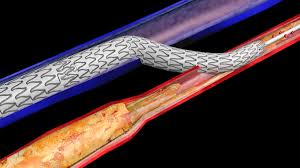 Transcatheter arterialization (TCA) of the deep veins is a minimally invasive procedure that is used to improve blood flow in the deep veins of the lower extremities.
Transcatheter arterialization (TCA) of the deep veins is a minimally invasive procedure that is used to improve blood flow in the deep veins of the lower extremities.
It involves the insertion of a catheter into the artery near the affected area, followed by the injection of a special material into the artery, and creates an arterial venous fistula.
The material then flows into the surrounding vessels, causing them to dilate and create new channels for blood flow.
This allows blood to bypass the damaged veins and flow through the newly created channels, improving overall blood circulation and reducing symptoms of venous insufficiency.
TCA has shown promising results in improving blood flow in patients with chronic venous insufficiency who have failed other treatments.
Transcatheter arterialization (TCA) also has been used as an alternative treatment strategy for patients with chronic limb ischemia.
Chronic limb ischemia is a condition characterized by a reduction or obstruction of blood flow to the limbs, which can cause pain, ulceration, and gangrene.
TCA involves the insertion of a catheter into the affected artery, followed by the injection of a special material into the artery.
The material promotes the formation of collateral circulation that provide alternative routes for blood flow to the affected limb.
This improves blood flow to the ischemic tissues, relieves symptoms, and promotes tissue healing.
TCA is less invasive than traditional surgical revascularization procedures and may be an option for patients with co-existing medical conditions that make them high-risk for surgery.
The TCA procedure requires one catheter to be advanced in the artery from the groin to the knee, and another catheter is advanced in the vein from the foot to the knee.
At this rendezvous point the artery and vein are mechanically connected with the use of a needle, guidewire and covered stents.
This creates a pathway from the upper leg arterial system to the venous circulation of the foot, essentially arterializing the venous flow and providing oxygenated blood to the ischemic tissues.
